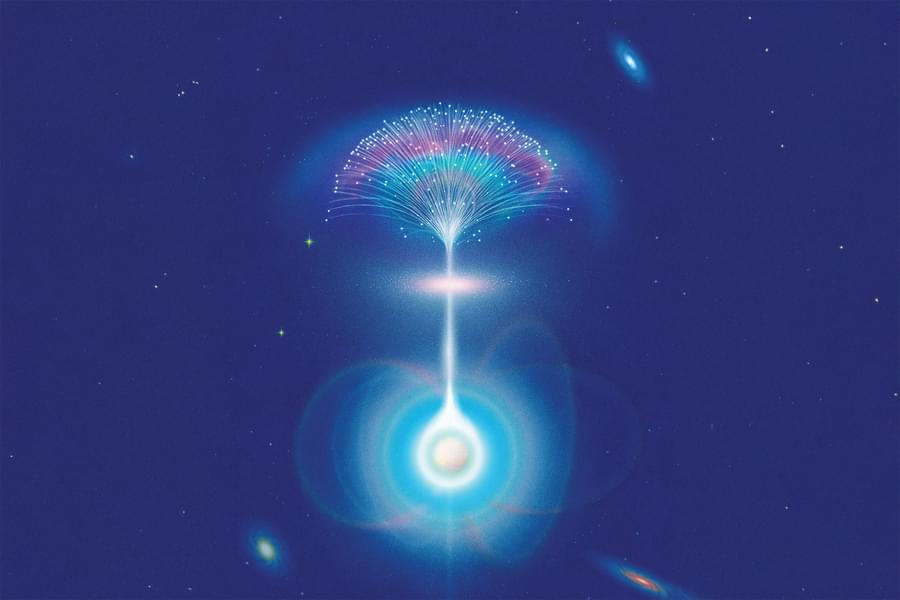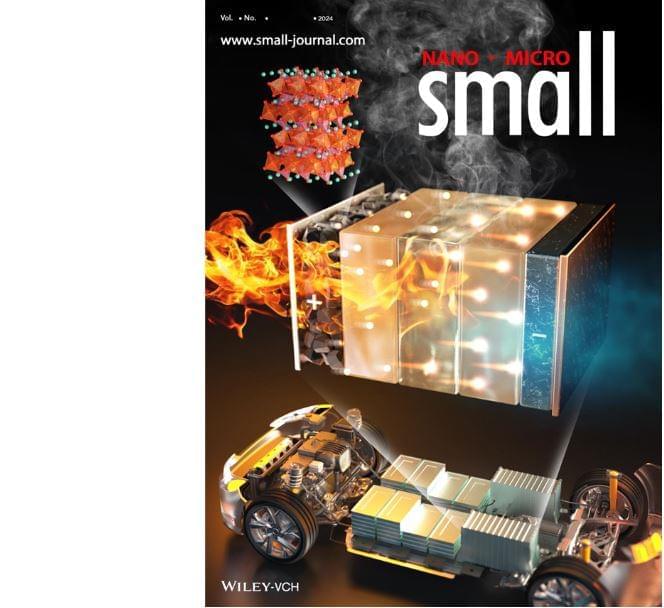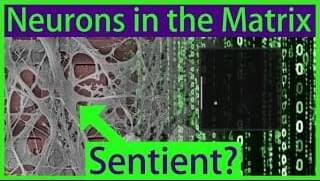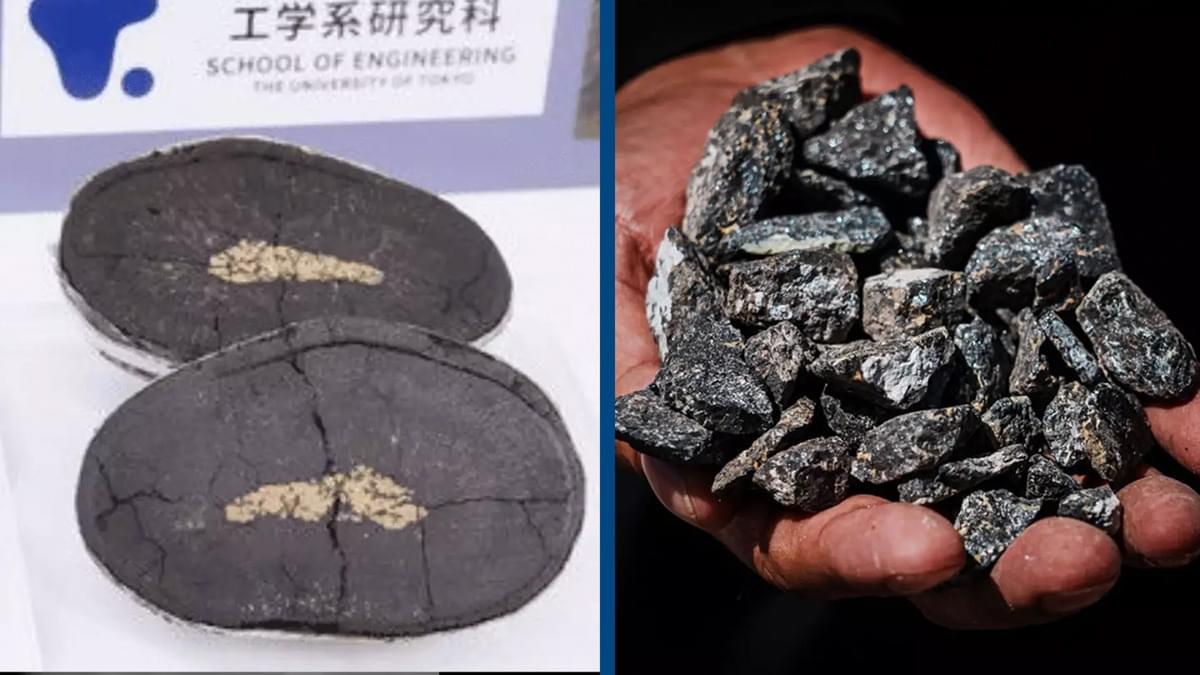Who will invent molecular jousting?
Frequency combs are revolutionizing optics, from telecommunications to astrophysics, but their complexity has been a roadblock.
Recent advancements in lithium tantalate technology have changed the game, creating a compact, user-friendly comb generator with incredible efficiency and bandwidth. This breakthrough could reshape fields like robotics and environmental monitoring, offering exciting new possibilities.
Frequency Combs in Modern Optics.
Scientists make breakthrough discovery after ‘atomic spray painting’ experiment: ‘It’s like spray-painting atoms onto a surface’
Posted in materials, particle physics | Leave a Comment on Scientists make breakthrough discovery after ‘atomic spray painting’ experiment: ‘It’s like spray-painting atoms onto a surface’
A research team has discovered that by using a new method of “atomic spray painting,” they can tweak the atomic structure of lead-free potassium niobate in order to enhance its ferroelectric properties.
The study, created by a team led by Penn State researchers, explains how molecular beam epitaxy can be employed to deposit atomic layers onto a substrate to create thin films, as a report by SciTechDaily explained.
Using a technique called strain tuning, the researchers adjusted how successive layers are aligned to modify a material’s properties by stretching or compressing the atoms that make up its crystal structure.
Open source and cheap DeepSeek means generative AI can push the exponential progress even faster. It runs on laptops!
“…digest the significance of DeepSeek’s AI reasoning model R1 published fully open-source last week…”
Yet R1 suggests that the thesis may be wrong.
Within no time, DeepSeek’s free-to-download app has https://www.reuters.com/technology/artificial-intelligence/c…1-27/” rel=“noopener” class=””>rocketed to the top of the App Store charts.
Its success follows the new Trump administration’s unveiling last week of its ambitious $500 billion https://fortune.com/2025/01/22/trump-openai-stargate-project…nk_clicks” rel=“noopener” class=””>Stargate AI program, which was designed to enshrine American dominance in technology for years to come.
Fast radio bursts are brief and brilliant explosions of radio waves emitted by extremely compact objects such as neutron stars and possibly black holes. These fleeting fireworks last for just a thousandth of a second and can carry an enormous amount of energy—enough to briefly outshine entire galaxies.
Since the first fast radio burst (FRB) was discovered in 2007, astronomers have detected thousands of FRBs, whose locations range from within our own galaxy to as far as 8 billion light-years away. Exactly how these cosmic radio flares are launched is a highly contested unknown.
Now, astronomers at MIT have pinned down the origins of at least one fast radio burst using a novel technique that could do the same for other FRBs. In their new study, appearing in the journal Nature, the team focused on FRB 20221022A—a previously discovered fast radio burst that was detected from a galaxy about 200 million light-years away.
A research team from DGIST’s (President Kunwoo Lee) Division of Energy & Environmental Technology, led by Principal Researcher Kim Jae-hyun, has developed a lithium metal battery using a “triple-layer solid polymer electrolyte” that offers greatly enhanced fire safety and an extended lifespan. This research holds promise for diverse applications, including in electric vehicles and large-scale energy storage systems.
Conventional solid polymer electrolyte batteries perform poorly due to structural limitations which hinder an optimal electrode contact.
This could not eliminate the issue of “dendrites” either, where lithium grows in tree-like structures during repeated charging and discharging cycles.
Extra dimensions—beyond length, width, height—seem like the stuff of science fiction. What would extra dimensions be like? Is time the fourth dimension? Does string theory require ten or eleven dimensions? Could deep reality be so strange? And, anyway, why would we care?
Make a tax-deductible donation to Closer To Truth to help us continue exploring the world’s deepest questions without paywalls: https://shorturl.at/OnyRq.
Lawrence Maxwell Krauss is a Canadian-American theoretical physicist and cosmologist who taught at Arizona State University, Yale University, and Case Western Reserve University. He founded ASU’s Origins Project in 2008 to investigate fundamental questions about the universe and served as the project’s director.
Show your support for the show with a purchase from the Closer To Truth merch store: https://bit.ly/3P2ogje.
Closer To Truth, hosted by Robert Lawrence Kuhn and directed by Peter Getzels, presents the world’s greatest thinkers exploring humanity’s deepest questions. Discover fundamental issues of existence. Engage new and diverse ways of thinking. Appreciate intense debates. Share your own opinions. Seek your own answers.
A leading neuroscientist claims that a pong-playing clump of about a million neurons is “sentient”. What does that mean? Why did Cortical Labs teach a lab-grown brain to play pong? To study biological self-organization at the root of life, intelligence, and consciousness. And, according to their website, “to see what happens.” What’s next for biocomputing?
CORRECTIONS/Clarifications:
- The cells aren’t directly frozen in liquid nitrogen — they are put in vials and stored in liquid nitrogen (and you can’t buy them legally without credentials) https://www.atcc.org/products/pcs-201-010
- The sentience of some invertebrates, like octopuses, is generally agreed upon. Prominent scientists affirmed non-human consciousness in the Cambridge Declaration on Consciousness: https://philiplow.foundation/consciousness/
- The “Neanderthal neurons” are human cells that are “Neanderthalized” using genetic engineering: https://www.youtube.com/watch?v=5FBxnkzI9HU
DISCLAIMER: The explanations in this video are those proposed by the researchers, or my opinion. We are far from understanding how brains, or even neurons, work. The free energy principle is one of many potential explanations.
Support the channel: https://www.patreon.com/IhmCurious.
Footage from Cortical Labs: https://www.youtube.com/watch?v=neV3aZtTgVM
NASJAQ’s interview with founder Hon Weng Chong: https://www.youtube.com/watch?v=Y1R5k5QWPsY
Cortical Labs website: https://corticallabs.com.
Full paper on DishBrain: https://www.cell.com/neuron/fulltext/S0896-6273(22)00806-6
NAD, a vital molecule for cellular energy and DNA
DNA, or deoxyribonucleic acid, is a molecule composed of two long strands of nucleotides that coil around each other to form a double helix. It is the hereditary material in humans and almost all other organisms that carries genetic instructions for development, functioning, growth, and reproduction. Nearly every cell in a person’s body has the same DNA. Most DNA is located in the cell nucleus (where it is called nuclear DNA), but a small amount of DNA can also be found in the mitochondria (where it is called mitochondrial DNA or mtDNA).
Link :
Rare minerals discovered in Japan could be a game changer for their economic security.
A group of researchers in Japan uncovered a cache of rare minerals in the seabed around Minami-Tori-shima island harbours.
The Nippon Foundation and the University of Tokyo conducted a survey which discovered around 610,000 metric tons of cobalt and 740,000 metric tons of nickel.









